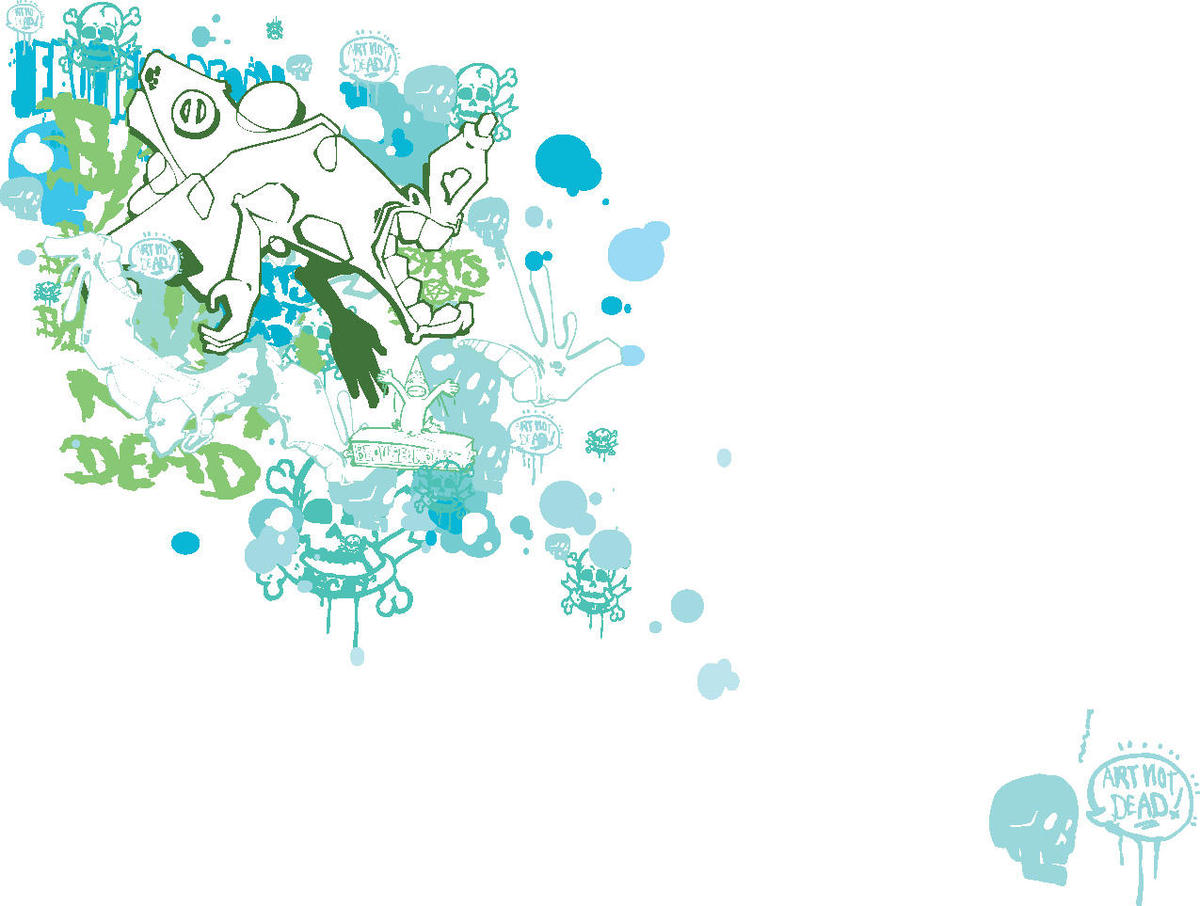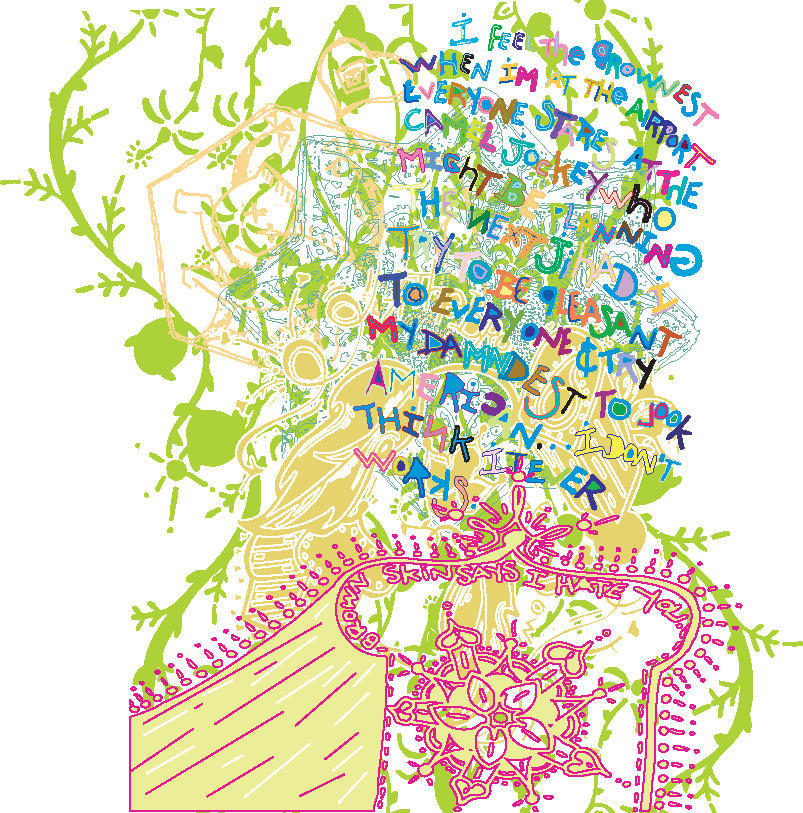
Amir Fallah calls himself a cultural hybrid. He is caught between his Iranian and American identities, but instead of having them play against each other in his mind, he has combined the two to create art. In his personal statement, he writes, “As a naturalized US citizen, who has lived in this country (US) for fifteen years, my upbringing has not been one of typical American youth. Traditional Persian cooking, speaking in Farsi, and being surrounded by a tight community of Iranians are all constant reminders that no matter how long I live in the US, I will never fit the idealized definition of an “American… I am held in a state of limbo by two cultures.” Fallah’s work combines Latinized Persian text and symbols of Persian architecture with graffiti art and raw bursts of energy. But it doesn’t stop there, he is also a talented graphic designer and magazine publisher. Amir is currently pursuing his Master of Fine Arts, studying under the prominent artist Larry Pittman at the University of California, Los Angeles.
The greatest influences from American popular culture on his work are skateboarding, graffiti art and punk rock. The impact of these three things led him to create Urban Decay, a magazine dedicated to these interests. For most people graffiti is a public nuisance and an example of illegal marking. For some it’s a spontaneous form of art and expression. I asked Amir what his definition of it was. “Graffiti art is lettering/imagery created without permission in the public arena. Once graffiti leaves behind the illegal element it is simply a characterization or illustration of graffiti. The very essence of graffiti art is the rebel mentality that goes with it. The lettering/imagery is simply an afterthought or a mark of the event that took place.”
Amir’s first significant foray into the arts began at school. “The first time I really took art seriously was in eighth grade, when I started taking art classes at my junior high. There was a competition for a small mural at the school.” He won.
Amir was fortunate that in the first years after discovering this talent, he was encouraged by those around him to continue exploring it. Very often children tend to be steered in directions that will help them get good jobs and the spheres of arts and culture are relegated to the realm of hobbies and external interests. Luckily for Amir his family did not try and suppress his creative spirit and during my discussions with him, I sensed the stabilizing force this support played in his life.
It was during his sophomore year in college that he first began to let his Iranian identity come out in his work. Since then Amir has continued to combine the eastern and western influences in his life into one. Through his work he manages to identify himself as both and Iranian and an American. Upon first glance, his paintings resemble street graffiti that one may find on city walls. But try reading the text and you realize that the letters are not forming English words. Amir uses the alphabet he knows to phonetically write in Persian, a language he can speak but whose script he cannot read. His earlier works are bursting with the things he wants to say. His statements are light hearted but poignant in their innocence of exploring his “Iranianess.” The following excerpt is taken from Amir’s artist statement:
Modern graffiti and Islamic calligraphy have many similarities. Both forms of art deal primarily with the manipulation and stylization of text. They both are intricate and do not rely on scenery or realistic renderings of figures. Islamic calligraphy deals with the use of repetition in patterns while graffiti artists use the repetition of their nickname or “tag” for recognition by other artists. In both forms, the oral tradition of teaching the art is also practiced. A master calligrapher hands down his knowledge of calligraphy to an apprentice and a skilled graffiti artist, hands down his knowledge in letterform, style and technique to young inexperienced writers also known as “toys.” Both forms of art rely on the use of architecture as a compositional factor. These and other similarities between these two styles.
Today, Amir’s work has become less full. He adds large planes of flat bright color. But within the planes there are moments of chaos — Persian words written with English letters, designs, patterns and icons reflecting his impressionable environment. He calls his paintings intuitive. He takes time to find inspiration and then translates those into ideas and images in his mind before putting them on canvas. His work is a direct reflection of how he filters the comings and goings of his surroundings, both conceptually and emotionally. I asked Amir what is the greatest part of being an artist? He states, “Ever since I was a young kid, I have always had a problem with other people laying out my future and telling me what sort of job or education I need. Maybe this is a result of being born in a country that tells you what to think, believe and do or maybe I am just stubborn. I can’t think of any other job, career, hobby or passion that gives one the freedom that art gives. I feel that I have complete control (to a certain extent of course) of which direction I can go and how I can go about it. This freedom mixed with an outlet to express myself and the events around me is the greatest part of being an artist.”
For many, perhaps the theme of cultural identity is blasé and has been overworked, but the creative process is one of the most poetic forms of exploration. Amir’s art not only explores the cultural disparities that exist between Middle Eastern and American culture, but also demonstrates how he has adapted to the differences and formed his own unique identity.

To learn more about Amir Fallah visit his web sites: www.hybridheart.com and www.beautifuldecay.com.